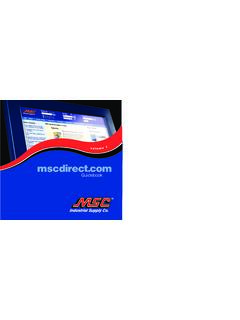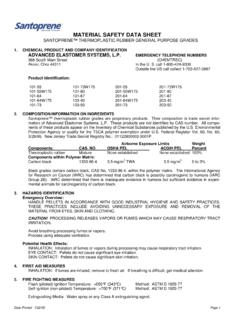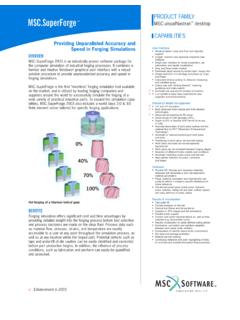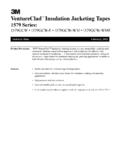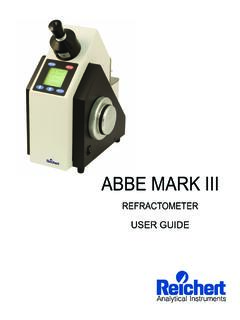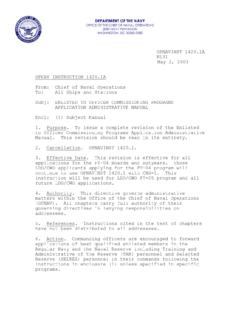Transcription of Experimental Modal Analysis and Computational Model ...
1 Proc. of ISMA2004; Leuven, Belgium; 2004 Experimental Modal Analysis and Computational Model Updating of a Car Body in White C. Schedlinski 1), F. Wagner 1), K. Bohnert 2), J. Frappier 3), A. Irrgang 4), R. Lehmann 5), A. M ller 6) 1) ICS , D-63225 Langen , Germany 2) Porsche AG, D-71287 Weissach, Germany 3) Volkswagen AG, D-38436 Wolfsburg, Germany 4) BMW AG, D-80788 M nchen, Germany 5) DaimlerChrysler AG, D-71059 Sindelfingen, Germany 6) Audi AG, D-85045 Ingolstadt, Germany Abstract To validate Finite Element models, test data, from an Experimental Modal Analysis , may be utilized. The Modal data themselves must be highly accurate since they form the basis for all subsequent validation efforts.
2 This implies that systematic test design accompanied by careful Modal testing is mandatory. If the deviations between test and Analysis are not acceptable (poor test/ Analysis correlation), the idealization of the investigated elastomechanical system must be reviewed. Because of the number of uncertain Model parameters usually being very high for industrial applications, an appropriate manual update based on engineering skills will most likely fail. Here, Computational Model updating techniques must be applied, which allow for a simultaneous update of multiple Model parameters. In this paper an integrated validation strategy is presented that takes into account the complete process chain from Model based test design, over Modal testing, data evaluation, test/ Analysis correlation to Computational Model updating.
3 By means of a real car body in white the single steps of the validation strategy will be highlighted, and it will be shown that very encouraging validation results can be obtained even for very complex systems. 1 Introduction The fidelity of structural mechanical Finite Element analyses (FEA) can be evaluated by using data from static or dynamic tests. Especially, eigenfrequencies and eigenvectors are employed, which can be identified from vibration tests by means of Experimental Modal Analysis (EMA) ([1], [2]). The deviations between test and Analysis allow for an evaluation of the quality of the utilized Finite Element Model . If the deviations between test and Analysis are not acceptable, the idealization of the investigated elastomechanical system is to be reviewed and eventually updated for receiving a validated Finite Element Model .
4 In order to keep uncertainties from the Experimental investigations as small as possible and for generating an optimal data base for the following Model validation thorough test planning and test execution is vital. If the structure of the Finite Element Model with respect to discretization, chosen element types etc. is correct (see for instance [3]), the test/ Analysis deviations can already be minimized by changing appropriate parameters based on the experience of the engineer in charge. However, proceeding this way bears limits for real elastomechanical systems due to the large number of parameters to be considered.
5 Here, methods for Computational Model updating (CMU) are to be applied, which allow for a simultaneous update of multiple Model parameters (see for instance [4], [5]). These techniques minimize the test/ Analysis deviations and enable the validation of the Finite Element Model . In practical applications the structure of Finite Element models is often not correct. However, the techniques for Computational Model updating can be adopted as well, but the final parameter changes often do not allow for a physical interpretation. They are mathematical substitutes for solely reducing the deviations between test and Analysis .
6 If the individual parameter changes are acceptable or if the Finite Element Model is to be revised often depends on the field of application of the particular Finite Element Model . A large and physically not interpretable increase of the shell thickness might be irrelevant for vibration analyses but might be unacceptable for stress analyses. For the project presented in this paper the test planning and the Computational Model updating is supported by a special MATLAB based software package for Model validation, developed by ICS and Professor Michael Link of the University of Kassel. Among other things, this software tool allows for the direct update of large scale Finite Element models onto Experimental Modal data (eigenfrequencies and mode shapes).
7 Therefore, especially the solvers for eigenvalue and eigenvector sensitivity Analysis under Solution 200 (optimization) are utilized. 2 Theory Overview The foundation for updating physical stiffness, mass and damping parameters is a parameterization of the system matrices according to equations (1) (see also [4], [5]): K = KA + i Ki , i = 1 .. n (1a) M = MA + j Mj , j = 1 .. n (1b) D = DA + k Dk , k = 1.
8 N (1c) with: KA, MA, DA initial analytical stiffness, mass and damping matrices p = [ i j k] vector of unknown design parameters Ki, Mj, Dk given substructure matrices defining location and type of Model uncertainties This parameterization permits the local adjustment of uncertain Model regions. By utilizing equations (1) and appropriate residuals, which consider different test/ Analysis deviations, the following objective function can be derived: J(p) = zT W z + pT Wp p min (2) with: z residual vector W, Wp weighting matrices The minimization of the objective function (2) yields the desired design parameters p.
9 The second term on the right hand side of equation (2) is used for constraining the parameter variation. The weighting matrix must be carefully selected, as for Wp >> 0 no parameter changes will occur (see also [4]). The residuals z = zT - z(p) (zT: test data vector, z(p): corresponding analytical data vector) are usually nonlinear functions of the design parameters. Thus, the minimization problem is also nonlinear and is to be solved iteratively. One solution is the application of the classical sensitivity approach (see [5]). Here, the analytical data vector is linearized at point 0 by means of a Taylor series expansion truncated after the linear term. Proceeding this way leads to: z = z0 - G0 p (3) with: p = p - p0 design parameter changes z0 = zT - z(p0) test/ Analysis deviations at linearization point 0 G0 = z/ p|p=p0 sensitivity matrix at linearization point 0 p0 design parameters at linearization point 0 As long as the design parameters are not bounded the minimization problem (2) yields the linear problem (4).
10 The latter is to be solved in each iteration step for the current linearization point: (G0T W G0 + Wp) p = G0T W z0 (4) For Wp = 0 equation (4) represents a standard weighted least squares approach. Of course, any other mathematical minimization technique can be applied for solving equation (2). In contrast to the assembly of the analytic stiffness and mass matrix, the generation of the analytic damping matrix is usually a difficult task. For treating system damping in an update process Modal damping parameters can be utilized alternatively. For further discussions on this topic it is referred to the literature (see for instance [4], [8]).
